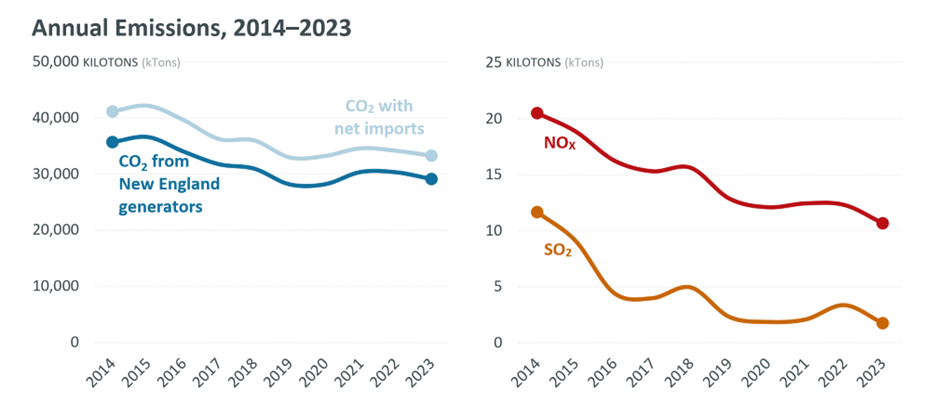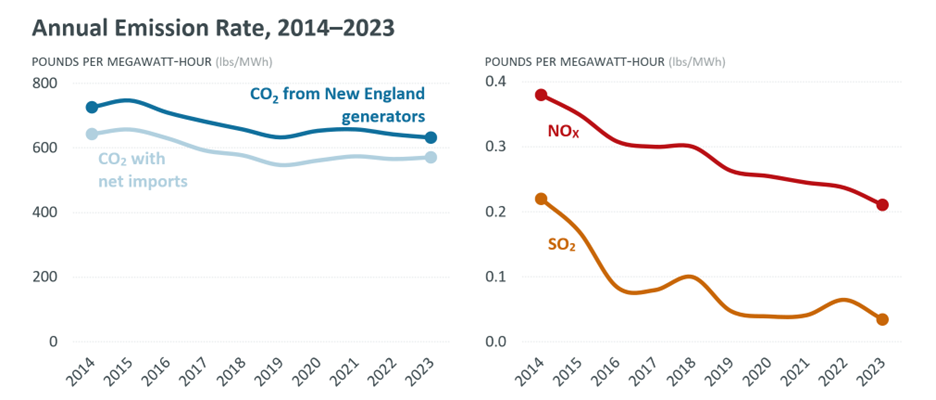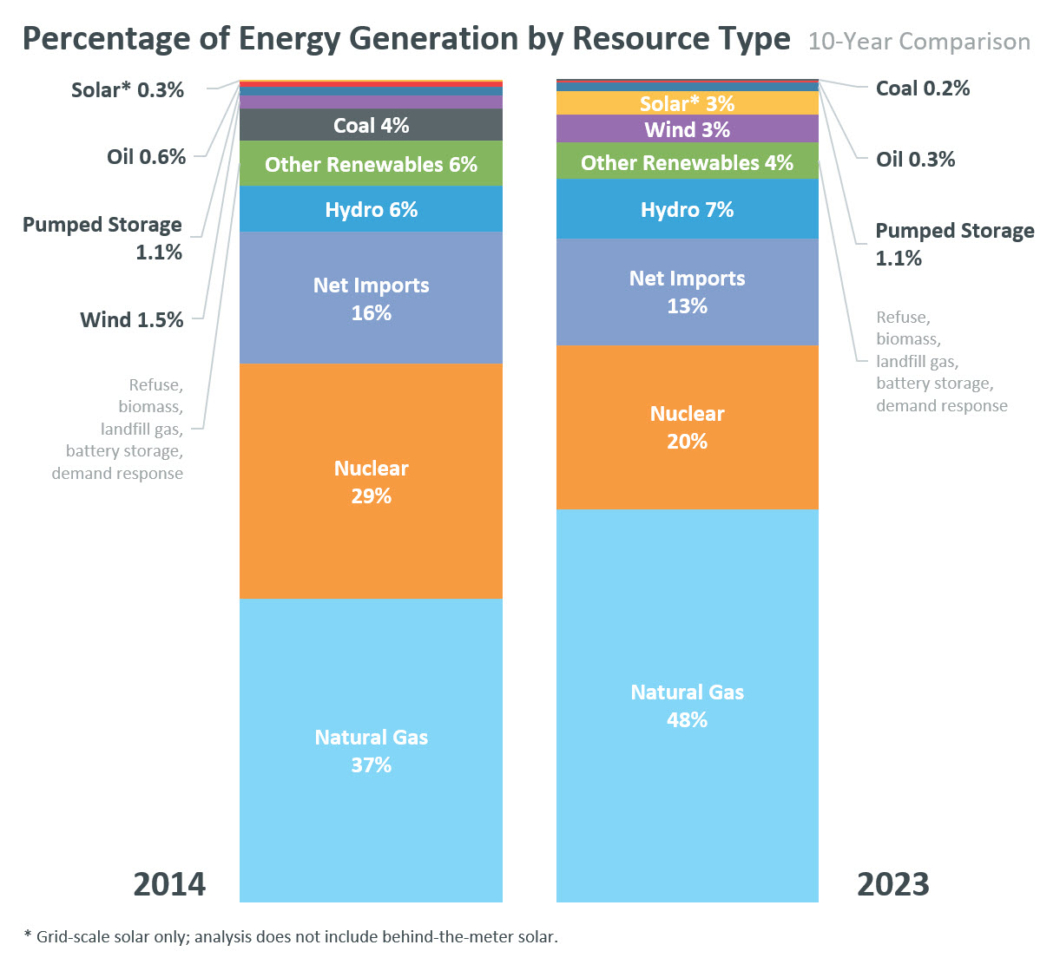Carbon emissions from New England power generation fell in 2023, ISO-NE analysis finds

Electricity generation within New England produced 4% less carbon dioxide (CO2) in 2023 than the previous year, according to estimates included in ISO New England’s latest annual analysis of power system emissions.
Lower production from oil- and coal-fired resources in 2023 also led to drops in total sulfur dioxide (SO2) and nitrous oxides (NOx) emissions.
The analysis, which draws information from Environmental Protection Agency (EPA) databases and other sources, found that New England’s current power system emissions are well below those observed in the early 2000s and 2010s. Carbon dioxide emissions declined 18% between 2014 and 2023.

Emissions rates for CO2, SO2, and NOx, which describe how many pounds of each pollutant are given off for every megawatt-hour (MWh) of electricity produced, have seen double-digit declines over the past decade, dropping 13%, 84% and 45% respectively.

By the numbers
The table below summarizes annual average emissions and emission rates for 2023, as well as the year-over-year changes from 2022. The table includes figures for emissions from New England generation, as well as data on emissions associated with New England generation plus electricity imported from other regions. More detailed results can be found in the report’s appendix.
| New England generation | 2023 emissions (kilotons) | Change from 2022 | 2023 emission rate (lbs/MWh) | Change from 2022 |
| NOx | 10.66 | -13% | 0.21 | -1.3% |
| SO2 | 1.77 | -48% | 0.03 | -5.7% |
| CO2 | 32,050 | -4% | 633 | -2% |
| New England generation and imports | ||||
| CO2 | 33,215 | -3% | 571 | +1% |
Report takeaways
Milder weather and increased rooftop solar drive lower carbon emissions: The region experienced a warmer winter and a cooler summer in 2023 than 2022, with fewer periods of tight system conditions. The region often relies on higher-emitting oil- and coal-fired generation to meet increased demand for cooling on very hot days, or to make up for natural gas pipeline constraints that can occur in very cold weather. The milder weather in 2023 led to lower output from generators using these stored fuels, contributing to the year-over-year drop in emissions. An increase in behind-the-meter (BTM) solar also helped reduce overall annual demand for grid electricity and related emissions.
Falling gas prices prompt decrease in output from oil and coal: In 2022, the early stages of the Russian-Ukrainian conflict drove higher natural gas prices, making oil and coal more economical to run during tight system conditions. Following this spike in 2022, natural gas prices fell in 2023.
Increase in renewables continues: Over the last 10 years, wind and solar generation in the region has more than doubled, making up 6% of the total energy generated in 2023. Wind and solar generation have now effectively replaced most coal and oil generation; coal and oil generated just 0.5% of the total energy in 2023, compared to 4.6% in 2014.

About the data
The report’s emissions estimates for generation within New England are based on data from the US Environmental Protection Agency’s Clean Air Markets Program database and the agency’s eGRID database, New England Power Pool Generator Information System monthly data, or the ISO’s calculation of emission rates based on unit type and age. CO2 emission rates for imports are based on data from the eGRID database for the New York ISO and on Canada’s Greenhouse Gas Inventory Report.
Some data sources are not available until several months after the end of a calendar year.
In addition to the annual analysis, the ISO publishes data on estimated CO2 emissions from New England power plants in a monthly recap of the wholesale electricity markets. Real-time estimates are available on ISO Express and the ISO to Go app.
- Categories
- Publications
- Tags
- clean energy, environment, natural gas, renewable resources, solar
